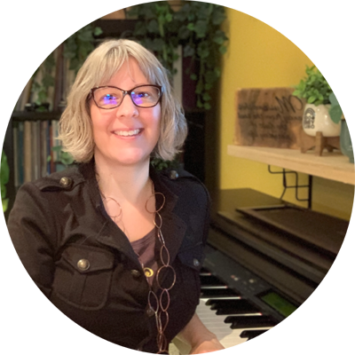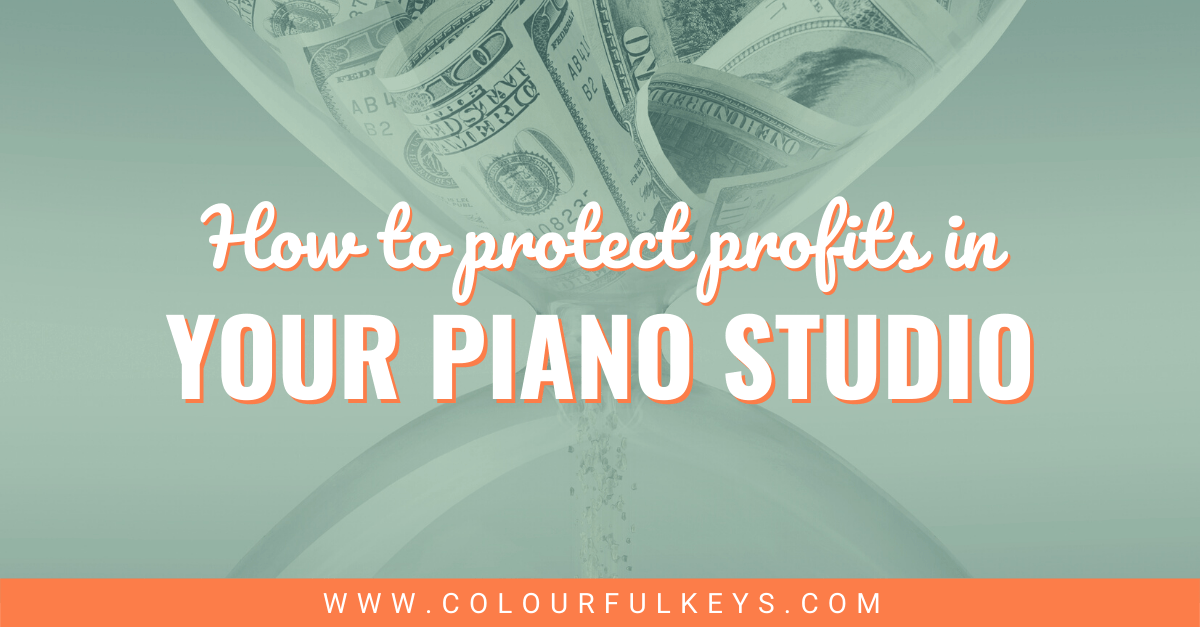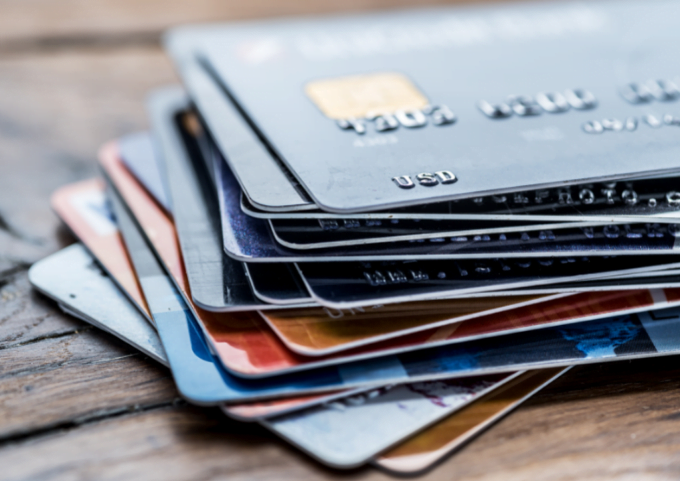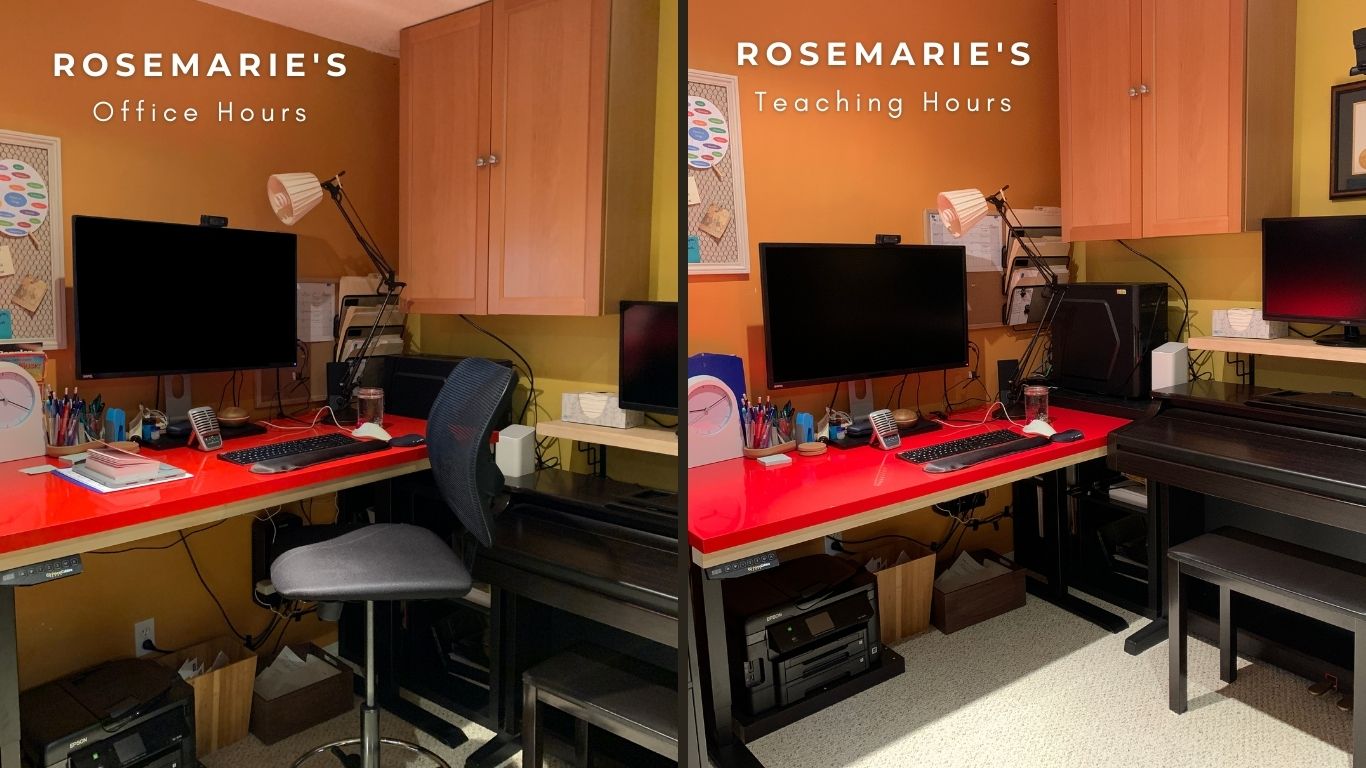
This article about how to bootstrap your piano studio was written by Rosemarie Penner. Rosemarie Penner is an analytical creative … plus online piano teacher and composer at “Must Love Music”! She loves to make learning simple, fun and interactive. When not writing articles (like this one), she enjoys reading and playing video games. For creative ideas and resources, visit Must Love Music.
The pull between running a business and following your passion is one all entrepreneurs struggle with at one point or another. Whether you’re a new independent music teacher or you’ve run your piano studio for decades, knowing how to bootstrap expenses to protect profit is a vital skill.

At its basic, bootstrapping means you are using existing resources (like your savings) to start or run a business.
“From Day One, a bootstrapped business has no choice but to make money. There’s no cushion in the bank and not much in the pockets. It’s make money or go home. To a bootstrapped business, money is air.”
-Jason Fried, CEO of Basecamp
This was definitely me when I first started my studio. I learnt how to create my studio website on my own because I couldn’t afford to hire someone to do that for me. I walked through my neighbourhood putting out flyers for piano lessons. I agonised over every purchase and made sure my studio policies were set up so I’d always be paid before teaching a single lesson.
And it paid off. The initial expenses of my studio were all paid off in the first month of teaching lessons.
This philosophy is still evident in the way I run things (though I don’t agonise as much as I used to). After 2 massive economic downturns and a pandemic, the lessons I learnt about how to bootstrap have meant my piano studio has not only survived but even has savings for unexpected expenses.
Since each of us is unique, how can you bootstrap your studio in a way which fits you?
Needs vs. Wants
We love to spend money on certain things (usually music), but a studio business includes so much more when it comes to expenses. This was something I had to learn the hard way. Both in terms of financial costs and time costs.
It can be oh-so-tempting to look at someone else’s studio or website and think “Oh, that’s what I need to be successful.” But, making the distinction between a want and a need is one of the foundational skills in bootstrapping your studio.
Website Design
A website is only as good as the value it provides for visitors. A beautifully designed, custom website means nothing if people don’t know whether you have what they need.
The design of my first studio website makes me cringe. Yet I was SO proud of it at the time.
Fast forward a decade. With more design and marketing knowledge under my belt plus much better tools available, it shows in the design. It has a lot fewer bells and whistles than you might think.
Do you need a custom-designed website? No.
Are you struggling with figuring out what to put on the site and how to word it? Then, you either need to read lots on design and marketing (time)…or, hire someone to guide you through the process (money). There is no shortcut.
Either option will allow you to bootstrap your piano studio because it allows you to save either time or money.
Marketing
We need to market our studios to keep a healthy number of students enrolled. That number is going to be different for each teacher.
Spending time walking throughout my neighbourhood was a marketing bust. At the time, spending money on ads wasn’t something I could afford. What worked instead was talking with people I knew and letting them know I was looking for students. In both cases I spent time, but one was more effective than the other.
If you’re embracing a bootstrapping philosophy, use free ideas first. Test them out to see what works and what doesn’t.
Stacy Tuschl (an entrepreneur I follow) points out that there is no reason to pour money into something which doesn’t work. In other words, figure out what marketing images, wording and approach are engaging people first. Then, spend money on ads.
Bootstrapping doesn’t mean you never spend money. It means being strategic about where that money and time is being spent.
Teaching Resources
There’s nothing like having the perfect resource on hand which lights up a student, right? But, a massive library of resources means very little if that library isn’t used to its full potential.
Do you need to create all your own teaching resources?
No.
Do you need to have a massive library of resources to effectively teach?
No.
But, you need the right resources at the right time. An ability to tweak those resources so they help more students in your piano studio helps you bootstrap (use what you already have) in an incredible way.
Vibrant Music Teaching has an incredible library of resources. There is a whole community (plus some really great YouTube tutorials) to help you take those resources and make the most of them.
Start with the End in Mind
It’s all well and good to bootstrap expenses in your studio. That’s a great habit to have. But, it’s only part of the equation.
“When you take your profit first, your business will tell you immediately whether it can afford the expenses you are incurring; it will tell you whether you are streamlined enough; it will tell you whether you have the right margins.”
–Mike Michalowicz, small business author
In other words, start with the end in mind by paying yourself first. Then, figure out everything else from there.
Avoid an Expenses-First Approach
The first year I ran my studio, I thought I was doing pretty well. There was enough profit to contribute to our family finances each month and buy resources for my students. Or so I thought. Summer came along and the income was no longer coming in. The savings I had disappeared and by August (prime resources purchasing season in the Northern hemisphere,) I had to use my credit card to buy the things I needed. Ouch.

Focusing on expenses first wasn’t working. Yes, I had enough income to cover expenses while I was teaching. But, the moment that income stopped I was in trouble. Does this sound familiar?
Pay Yourself First
While it would be nice to teach and serve our studio families without worrying about the money, the truth is we have bills to pay. So, can we have our cake and eat it too? Yes!
If you are running a studio, then those funds are not your discretionary or personal funds. This is true for taxes and it’s true for business. Instead, tally up your non-studio expenses so you know what your salary needs to be.
If you take time off in the summer (like I do), make sure you budget enough to cover your personal financial commitments during that time. And, aim to give yourself a buffer (something I learnt through trial and error).
Giving yourself a regular salary means you get to make a living doing what you love.
Look at Studio Expenses Regularly
One of the best financial decisions I made once Covid hit was going through all my studio expenses. I created a spreadsheet which listed every recurring subscription and expense with the monthly and annual cost of those items. Line by line I went down the list and looked at whether I would continue using the item or let it go.
What stayed? The subscriptions and expenses which fit my bootstrapping philosophy, of course.
It wasn’t about the least expensive options. It was the subscriptions and tools which were the most effective. Things which stayed on the list included:
- Accounting software which set recurring invoices with automatic reminders
- Marketing software which I used every week
- Professional development which helped me become a better teacher and business owner
- General funds for resources which made my teaching life easier and more effective
By the way, professional development should always be included in annual studio expenses. You’re investing in yourself. What you learn will make a massive difference not only in your life but the lives of your clients and students as well.
If you don’t have a studio budget already, Nicola has a fantastic article on “How to Create a Studio Budget” to get started.
Set Aside Studio Savings
While this perhaps doesn’t fall under “bootstrapping” your studio, it’s still important advice. There will be times when expenses pop up.
Your computer/tablet/webcam/microphone (you get the idea) breaks down and needs to be replaced. There could be an incredible sale for your favourite method series or composer.
Or, you decide to combine your office and teaching space (as I did.) I still get excited every time I see my vibrant red desk transition from ‘office time’ to ‘teaching time’ on that hydraulic lift system. Plus, all those plants I see in my peripheral vision throughout the day? Best investment I’ve made in the last 6 months!

Starting a savings account for my studio has made all this possible. While I still think carefully about new expenses, it’s such a relief knowing I have the funds to replace or update tech, get resources which help my students, register for professional development or anything else I think will improve my studio.
Bootstrapping Your Studio
While talking about finances and analysing expenses (both monetary and time) isn’t the sexiest of topics, I hope you’ve gotten excited about the possibilities.
Bootstrapping my studio has given me the freedom to pursue – and at times pivot – the vision I have for my studio. It’s given a framework for running a profitable business which gives me enough time to be creative in my teaching and have balance in my life.
What bootstrapping tip will make the biggest difference in your studio?
Let me know in the comments below.
If you’d like more help managing the business side of your teaching studio, Nicola has a page devoted to helping you do just that.
